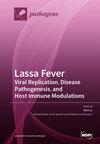通过 MALDI-TOF MS 诊断接受手术康复治疗的口腔裂患者的口腔葡萄球菌菌种和 MRSA 菌株
IF 3.3
3区 医学
Q2 MICROBIOLOGY
引用次数: 0
摘要
本研究调查了接受手术康复治疗的口面部裂患者口腔葡萄球菌的发生率和动态变化。对患者(n = 59)进行了分层统计和分析(年龄、性别、口面裂类型、手术史和既往手术康复类型)。唾液样本是在住院至返回专科医疗中心期间采集的。微生物学诊断通过传统方法和 MALDI-TOF MS 进行。MRSA菌株(SCCmec II型、III型和IV型)采用决策树法进行鉴定。共有 33 名(55.9%)患者在一个、两个或三个采样步骤中出现口腔葡萄球菌定植。据报道,金黄色葡萄球菌(包括 HA-、MRSA 和 CA-MRSA)的发病率较高,其次是溶血性葡萄球菌、表皮葡萄球菌、sciuri 葡萄球菌、溶血性葡萄球菌、扁桃体葡萄球菌、arlettae 葡萄球菌和 warneri 葡萄球菌。在整个手术治疗和医疗随访过程中,口腔定植的动态可能受到以下因素的影响:(i) 葡萄球菌维持的不平衡;(ii) 手术无菌操作的效率或无菌链的断裂;(iii) 新修复的解剖口腔部位的葡萄球菌新定植;(iv) 全部或部分葡萄球菌的维持。专科医疗和牙科中心的临床周期非常频繁,这可能是这些患者感染 MRSA 的原因之一。本文章由计算机程序翻译,如有差异,请以英文原文为准。
Oral Staphylococcus Species and MRSA Strains in Patients with Orofacial Clefts Undergoing Surgical Rehabilitation Diagnosed by MALDI-TOF MS
This study investigated the occurrence and dynamics of oral Staphylococcus species in patients with orofacial clefts undergoing surgical rehabilitation treatment. Patients (n = 59) were statistically stratified and analyzed (age, gender, types of orofacial clefts, surgical history, and types of previous surgical rehabilitation). Salivary samples were obtained between hospitalization and the return to the specialized medical center. Microbiological diagnosis was performed by classical methods, and MALDI-TOF MS. MRSA strains (SCCmec type II, III, and IV) were characterized by the Decision Tree method. A total of 33 (55.9%) patients showed oral staphylococcal colonization in one, two, or three sampling steps. A high prevalence has been reported for S. aureus (including HA-, MRSA and CA-MRSA), followed by S. saprophyticus, S. epidermidis, S. sciuri, S. haemolyticus, S. lentus, S. arlettae, and S. warneri. The dynamics of oral colonization throughout surgical treatment and medical follow-up may be influenced by (i) imbalances in staphylococcal maintenance, (ii) efficiency of surgical asepsis or break of the aseptic chain, (iii) staphylococcal neocolonization in newly rehabilitated anatomical oral sites, and (iv) total or partial maintenance of staphylococcal species. The highly frequent clinical periodicity in specialized medical and dental centers may contribute to the acquisition of MRSA in these patients.
求助全文
通过发布文献求助,成功后即可免费获取论文全文。
去求助
来源期刊

Pathogens
Medicine-Immunology and Allergy
CiteScore
6.40
自引率
8.10%
发文量
1285
审稿时长
17.75 days
期刊介绍:
Pathogens (ISSN 2076-0817) publishes reviews, regular research papers and short notes on all aspects of pathogens and pathogen-host interactions. There is no restriction on the length of the papers. Our aim is to encourage scientists to publish their experimental and theoretical research in as much detail as possible. Full experimental and/or methodical details must be provided for research articles.
 求助内容:
求助内容: 应助结果提醒方式:
应助结果提醒方式:


